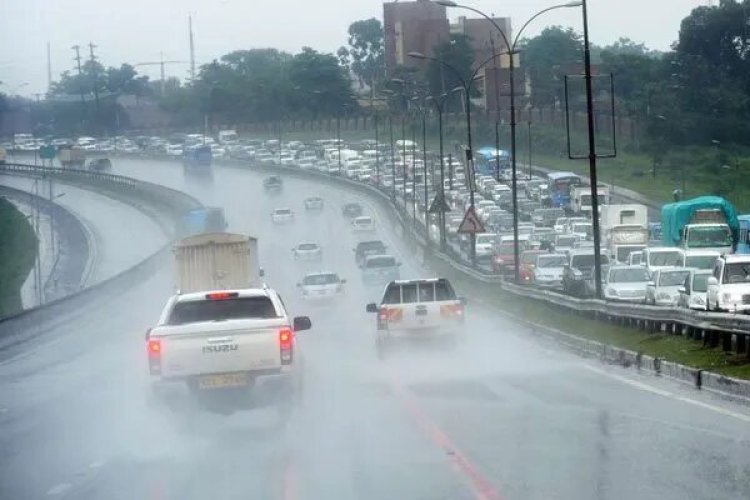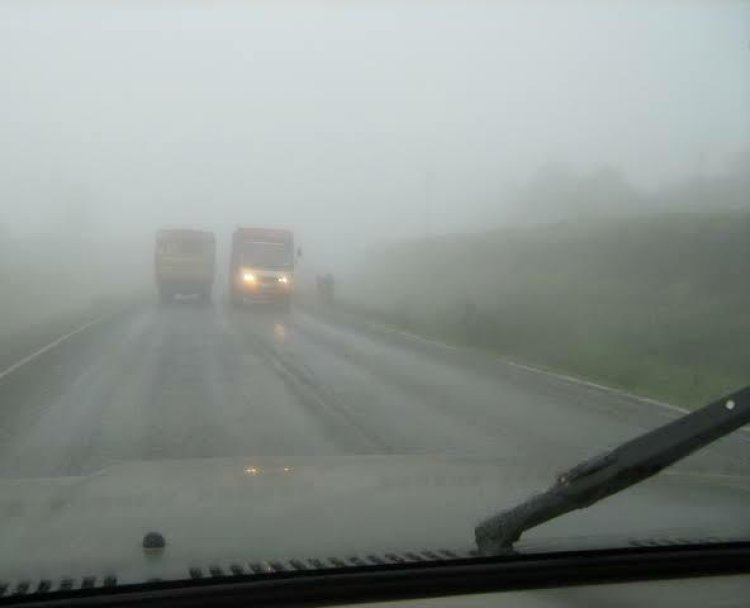What To Do While Driving In Rain Along Major Highways- Kenya Met
To drive safely on Kenyan roads when it rains, you must be extra cautious to ensure your safety and that of other road users.

The Kenya Meteorological Department (KMD) has warned Kenyan motorists using the Nakuru-Nairobi Highway among other major highways on slippery roads and poor visibility caused by the heavy rainfall witnessed across the country.
In a statement on Tuesday, April 4, the weatherman noted that the combination is a high risk to motorists and pedestrians plying the Kikuyu-Kinungi stretch on the major road.
"Slippery roads and poor visibility during rainstorms may also pose a danger to motorists and pedestrians, especially along the Kikuyu-Kinungi stretch on the Nakuru-Nairobi Highway.
"The public should, therefore, take utmost care during the rainy period to minimize accidents that could result from such weather conditions. Measures such as improving road signage and traffic management, as well as encouraging motorists to use headlights during low visibility, should be implemented to enhance safety on the roads," KMD stated in part.

An image of a foggy Nairobi-Nakuru Highway. /FILE
Many people lose their lives every year to accidents on Kenyan roads due to various factors including careless driving, drunk driving, and overspeeding, among others.
Just like driving at night, the risk of accidents increases also when it rains. This is because rain reduces visibility on the road and makes road surfaces more slippery, making driving difficult.
To drive safely on Kenyan roads when it rains, you must be extra cautious to ensure your safety and that of other road users.
Slow down and maintain a safe distance
One of the most important things to do to drive safely in the rain is to slow down and maintain a safe distance from the vehicle ahead of you. Rain reduces visibility and you shouldn’t drive fast when you can’t see the road clearly.
It also makes the road surface wet, which might cause skidding and increases the braking distance when you apply the brakes. You are therefore recommended to drive slowly and keep a safe distance to get enough reaction time in case of emergencies.
Use your fog lights, parking lights or headlights
Some cars have fog lights installed in them, and they are there to be turned on when the weather is foggy or rainy for other drivers to see you.
If your car doesn’t have fog lights, then you can use your parking lights. However, depending on the weather condition, you can turn on your headlights if the visibility is too low.
However, make sure to use the low beams so as not to blind other drivers. Also, use turn signals correctly to communicate your intentions to other drivers.
Be extra cautious at intersections
Intersections can be dangerous when it’s raining, as it’s difficult to see oncoming vehicles and judge their distance.
Slowing down and looking carefully before proceeding is one of the most important safe driving tips to observe while at intersections.
Stop completely and be extra cautious when turning. Yielding the right of way can also help you navigate safely.
Avoid hydroplaning
In broad terms, hydroplaning (sometimes referred to as “aquaplaning”) is uncontrollable sliding on a wet surface. Essentially, your tires have lost their grip on the road, and are instead riding on top of the standing water.
This can lead to an assortment of undesirable, and sometimes dangerous circumstances; the car can turn sideways, veer into other lanes/the guard wall/off the road completely, and even flip in some cases.
In simple terms, hydroplaning happens when you drive too fast through a flooded section, which causes your tires to lose contact with the road. It is even worse if your tyres are under-inflated as this can make you lose control of your vehicle and cause an accident.
To avoid hydroplaning, reduce your speed, avoid driving through stagnant water if possible, and ensure your tires are properly inflated.
Watch out for pedestrians and other road users
Safe driving in the rain is not only about avoiding accidents with other cars, but it is also important to be mindful of other road users.
In such situations, it’s difficult to spot pedestrians, cyclists, and other road users, so it’s important to be alert and watch out for them. Be careful not to hit pedestrians who are crossing or walking by the road.
Other than the dangers of rainy weather along the roads, KMD named over 18 areas likely to experience storms, including the Lake Victoria Basin, parts of southern Rift Valley and parts of the highlands west of Rift Valley.
Others include Siaya, Kisumu, Homa Bay, Migori, Busia, Kisii, Nyamira, Kericho, Bomet, Kakamega, Nandi, Bungoma, Vihiga and Western parts of Narok counties.
Additionally, the weatherman stated that parts of the Central and South Rift region would also experience storms as rainfall is expected throughout April. The areas listed included Baringo, Laikipia, Nakuru, parts of Narok, West Pokot, Trans Nzoia, Uasin Gishu, and Elgeyo Marakwet counties.

Nairobi residents should also expect long-term average rainfall, which could cause floods in some estates.
The Met Department also raised an alarm regarding vector-borne diseases such as malaria, dengue, and chikungunya which are expected to increase in certain regions of the country.
Malaria is likely to increase in the Lake Victoria Basin, Northeast, Northwest, and the Coastal Strip, while cases of dengue and chikungunya may also increase in the Coastal region.

 admin
admin 




